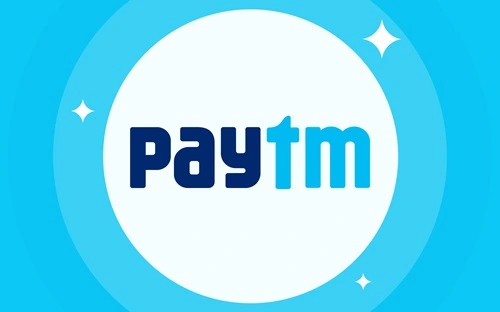Paytm, founded in 2010 by Vijay Shekhar Sharma, started as a mobile recharge platform and quickly expanded into India’s largest digital payments company. With over 400 million registered users, Paytm has become synonymous with digital transactions in India, offering a wide range of services that include payments, banking, e-commerce, insurance, and wealth management. In 2021, Paytm went public with one of India’s largest IPOs, underscoring its ambition to consolidate its position in India’s rapidly growing fintech sector. However, Paytm faces both opportunities and challenges as the fintech landscape evolves with increased competition, regulatory scrutiny, and changing consumer preferences. This SWOT (Strengths, Weaknesses, Opportunities, Threats) analysis examines Paytm’s current position and its outlook in India’s dynamic digital economy.

Strengths
1. Strong Brand Recognition and Market Leadership:
Paytm enjoys strong brand recognition in India, having established itself as a leader in digital payments. The brand’s early entry into India’s digital payments space has given it a loyal customer base across urban and rural areas. Paytm’s reputation as a trusted and secure platform has made it a household name, particularly for QR-based payments and mobile recharges. This brand equity provides Paytm with a competitive edge in retaining users and attracting new customers.
2. Diverse Product Portfolio and Ecosystem of Services:
Paytm has diversified its offerings beyond payments, building a comprehensive digital ecosystem. Its services include Paytm Wallet, UPI payments, Paytm Postpaid (BNPL), Paytm Payments Bank, insurance, and mutual fund investments through Paytm Money. This integrated platform enables Paytm to cross-sell services, offering customers a one-stop solution for various financial needs. The wide array of services allows Paytm to retain users within its ecosystem, increasing customer lifetime value and engagement.
3. Strong Presence Across Tier 2 and Tier 3 Cities:
Paytm has successfully expanded its reach into India’s Tier 2 and Tier 3 cities, tapping into an underbanked and underserved market. Through its QR code-based payments and partnerships with local merchants, Paytm has become a preferred digital payment method in smaller towns and rural areas. This extensive reach in non-metro regions strengthens its market position and broadens its customer base, enabling it to capture demand in emerging regions with growing digital adoption.
4. Technological Innovation and Data-Driven Approach:
Paytm invests heavily in technology and data analytics, leveraging AI and machine learning to personalize user experiences, optimize payment flows, and enhance fraud detection. Its data-driven approach helps Paytm understand customer behavior, improve service offerings, and drive engagement. This focus on technology and data analytics has enabled Paytm to remain competitive, continuously innovate, and offer customized solutions to meet diverse user needs.
Weaknesses
1. High Cash Burn and Profitability Challenges:
Despite its market leadership, Paytm has struggled with profitability due to its high cash burn rate, driven by customer acquisition costs, discounts, and incentives. While Paytm has reduced cash burn in recent years, it continues to face profitability challenges, especially as it scales its operations. The company’s significant investments in marketing, technology, and new business segments add to its cost structure, limiting short-term profitability and raising concerns among investors.
2. Regulatory and Compliance Complexity:
As a multi-service fintech company, Paytm operates under several regulatory frameworks, including the Reserve Bank of India (RBI) for payments and banking, the Securities and Exchange Board of India (SEBI) for investments, and the Insurance Regulatory and Development Authority (IRDAI) for insurance. This regulatory complexity increases compliance costs and can affect Paytm’s flexibility in launching new products. Additionally, Paytm Payments Bank has faced regulatory scrutiny in the past, impacting its operations and reputation.
3. Dependence on Payments Revenue and Limited Revenue Diversification:
While Paytm offers a wide range of services, a significant portion of its revenue still comes from its payments business, making it vulnerable to competition and regulatory changes in this space. Although Paytm has diversified into banking, lending, and wealth management, these segments contribute a relatively small percentage to overall revenue. This dependency on payments revenue limits Paytm’s ability to generate stable income from other high-margin segments.
4. Increased Competition in the Fintech and Payments Space:
Paytm faces intense competition from other fintech players and tech giants like PhonePe, Google Pay, Amazon Pay, and BharatPe. These competitors often have deep pockets and strong technological capabilities, which allows them to offer similar services at competitive prices or with lucrative incentives. The growing number of competitors in India’s digital payments space poses a challenge for Paytm in terms of customer acquisition, retention, and market share.
Opportunities
1. Growth in Digital Payments and Financial Inclusion:
India’s digital payments market is growing rapidly, driven by the government’s push for a cashless economy, increased smartphone penetration, and improved internet connectivity. As digital adoption spreads to rural areas and smaller towns, Paytm can leverage its strong presence in these regions to capture new users. The company’s position in financial inclusion aligns well with India’s vision of a cashless economy, providing a growth opportunity for Paytm to expand its user base.
2. Expansion in Financial Services and Lending:
Paytm’s entry into lending, wealth management, and insurance offers significant growth potential, particularly as more Indians adopt digital financial services. Paytm Postpaid (BNPL), personal loans, and business loans through partnerships with banks and NBFCs can contribute to revenue diversification. Additionally, the wealth management and insurance sectors in India are poised for growth, with more consumers looking for accessible investment and insurance solutions. Expanding in these high-margin segments can boost Paytm’s revenue and reduce dependency on payments.
3. Development of Paytm Payments Bank and Digital Banking:
With the growth of digital banking, Paytm Payments Bank has the potential to serve as a comprehensive banking solution for underbanked and unbanked populations. By expanding Paytm Payments Bank’s offerings, such as savings accounts, fixed deposits, and debit cards, Paytm can capture demand from users seeking low-cost, digital-first banking options. This focus on digital banking could drive revenue, increase customer engagement, and position Paytm as a financial inclusion leader.
4. Leveraging AI and Big Data for Personalized Financial Solutions:
Paytm’s access to large volumes of customer data presents an opportunity to offer personalized financial solutions, such as targeted lending, customized insurance plans, and tailored investment products. By leveraging AI and data analytics, Paytm can create a more personalized customer experience, enhancing user satisfaction and loyalty. Additionally, data-driven insights can help Paytm make informed decisions on product development, customer acquisition, and risk management.
Threats
1. Regulatory Risks and Compliance Costs:
The fintech industry in India is heavily regulated, and changes in government policies or RBI regulations can impact Paytm’s operations. For example, stricter guidelines on digital lending, KYC (Know Your Customer) requirements, or transaction fees could increase compliance costs and limit Paytm’s flexibility in product offerings. Paytm Payments Bank has also faced scrutiny from regulators, and any future regulatory restrictions could hinder Paytm’s expansion plans.
2. Rising Competition from Tech Giants and New Entrants:
The Indian digital payments market has become increasingly competitive, with players like Google Pay, PhonePe, and Amazon Pay aggressively expanding their presence. These companies have significant resources and global expertise, enabling them to offer similar services with lower transaction fees or better incentives. Additionally, the entry of new players like WhatsApp Pay further intensifies competition, putting pressure on Paytm’s market share and customer acquisition efforts.
3. Low Switching Costs for Consumers:
Digital payments are characterized by low switching costs, as users can easily move between different apps based on convenience, discounts, or incentives. This low loyalty in the fintech space makes it challenging for Paytm to retain customers, particularly in an environment where competitors frequently offer rewards and cashback. Customer retention requires continuous investment in incentives, which can impact profitability and increase customer acquisition costs.
4. Cybersecurity and Data Privacy Concerns:
As a digital platform handling financial transactions and sensitive customer data, Paytm faces the risk of cyber-attacks, data breaches, and fraud. Ensuring robust cybersecurity measures is essential to maintaining customer trust and complying with regulatory requirements. Any data breach or cybersecurity lapse could damage Paytm’s reputation, leading to customer attrition, regulatory fines, and operational disruptions.
Future Outlook
The future outlook for Paytm is promising, given India’s strong push toward digital payments, financial inclusion, and the growing demand for online financial services. As digital adoption continues to rise, Paytm’s extensive reach in both urban and rural areas positions it well to capture growth in India’s fintech space. By leveraging its existing user base, Paytm can further expand its footprint in financial services, including lending, wealth management, and insurance.
To capitalize on emerging opportunities, Paytm must strengthen its profitability by reducing cash burn, optimizing costs, and increasing revenue from high-margin segments like lending and digital banking. Paytm’s entry into digital lending through Paytm Postpaid and partnerships with NBFCs and banks is a positive step toward revenue diversification. Expanding its offerings in investment and insurance products can further bolster revenue and reduce dependence on payments.
A focus on digital banking offers potential for Paytm Payments Bank to serve as a comprehensive financial solution for underserved populations. By introducing new banking services and reaching unbanked regions, Paytm can strengthen its presence in the digital banking sector, positioning itself as a leader in financial inclusion.
However, Paytm must address threats posed by regulatory risks, competition, and cybersecurity. Navigating regulatory changes, enhancing cybersecurity measures, and managing compliance costs will be crucial for Paytm to sustain growth. Strengthening its digital ecosystem, improving customer retention strategies, and expanding personalized offerings will also be key to differentiating Paytm from competitors.
In conclusion, Paytm’s strengths in brand recognition, diversified services, and extensive reach provide a solid foundation for growth in India’s rapidly evolving fintech landscape. By focusing on digital banking, expanding financial services, and enhancing technological innovation, Paytm can adapt to changing industry dynamics and capture growth in India’s digital economy. With a balanced approach to innovation, profitability, and customer-centric solutions, Paytm is well-prepared to navigate challenges and capitalize on opportunities in the competitive fintech market.

